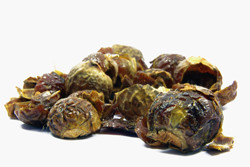Plant saponins as surfactants
Surfactants are compounds, usually extracted from petrochemicals, which form natural layers between different liquids or gases. Saponins are naturally occurring plant compounds that are known to work as surfactants, but their properties as foam and emulsion stabilisers is not well understood. As such, the EU-funded 'Foams and emulsions stabilized by saponins' (F.E.S.S.) project was specifically set up to study the properties of various saponins in foams and emulsions. Eleven saponin compounds with a wide range of structures and properties were chosen for the investigation. Researchers studied the mechanical properties of the saponins at the air–water layer, the water–oil layer, and as part of concentrated foams. F.E.S.S. found that at the air–water interface several saponins had among the highest mechanical strength of any known surfactants. Similar properties were found for the oil–water layer, although the mechanical strength was generally lower in the presence of oil. To evaluate the foam-stabilising properties of saponins, researchers studied the mean bubble size in foams that include saponin molecules. Certain saponins could significantly limit bubble size, which is a proxy measure for foam stabilisation. The F.E.S.S. project produced comprehensive information on the surface properties of several saponins, which included defining a relationship between the structure and surfactant properties. These results will provide a foundation for the commercial application of saponins as surfactants.







